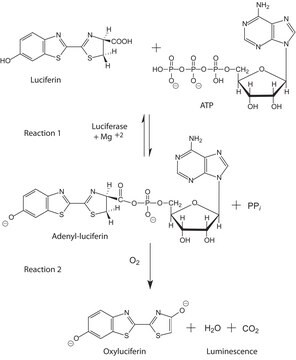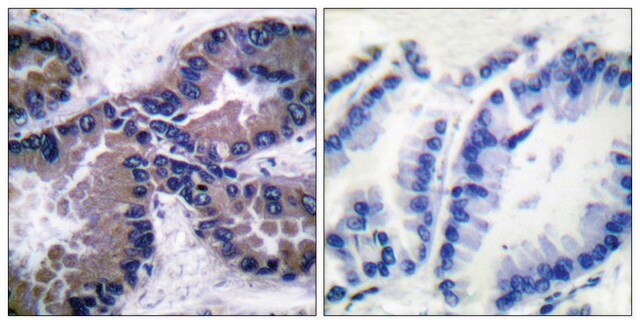MAK113
ATPase/GTPase Activity Assay Kit
sufficient for 200 colorimetric tests
Sign Into View Organizational & Contract Pricing
All Photos(1)
About This Item
UNSPSC Code:
12161503
NACRES:
NA.84
Recommended Products
usage
sufficient for 200 colorimetric tests
detection method
colorimetric
relevant disease(s)
cancer
storage temp.
2-8°C
Related Categories
General description
ATPases and GTPases catalyze the decomposition of ATP or GTP into ADP or GDP and free phosphate. These enzymes play key roles in transport, signal transduction, protein biosynthesis, and cell differentiation.
Features and Benefits
Compatible with high-throughput handling systems.
Suitability
Suitable for the detection of ATPase and GTPase activity and for the screening of ATPase and GTPase inhibitors.
Principle
The ATPase/GTPase Activity Assay kit provides a simple and direct procedure for measuring ATPase/GTPase activity in a microplate format. This kit uses a single reagent formulation to accurately determine enzyme activity in 30 minutes at room temperature. The malachite green reagent forms a stable dark green color with free phosphate liberated by the enzymes resulting in a colorimetric product, measured at 620 nm (600-660 nm), proportional to the enzyme activity present One unit of activity is the amount of enzyme that catalyzes the production of 1 μmole of free phosphate per minute under the assay conditions.
Signal Word
Warning
Hazard Statements
Precautionary Statements
Hazard Classifications
Met. Corr. 1
Storage Class Code
8B - Non-combustible corrosive hazardous materials
Flash Point(F)
Not applicable
Flash Point(C)
Not applicable
Choose from one of the most recent versions:
Certificates of Analysis (COA)
Lot/Batch Number
Don't see the Right Version?
If you require a particular version, you can look up a specific certificate by the Lot or Batch number.
Already Own This Product?
Find documentation for the products that you have recently purchased in the Document Library.
Shannon E Hill et al.
PloS one, 12(7), e0180241-e0180241 (2017-07-26)
Dihydroneopterin triphosphate pyrophosphatase (DHNTPase), a member of the Mg2+ dependent Nudix hydrolase superfamily, is the recently-discovered enzyme that functions in the second step of the pterin branch of the folate biosynthetic pathway in E. coli. DHNTPase is of interest because
Xia Zhang et al.
iScience, 17, 36-48 (2019-06-30)
MOV10L1 and its paralog MOV10 are evolutionally conserved RNA helicases involved in distinct RNA regulatory pathways. The testis-specific MOV10L1 is essential for spermatogenesis and PIWI-interacting RNAs biogenesis, whereas MOV10 is ubiquitous and multifunctional. Although both proteins have been implied to
Chaoyou Xue et al.
Nucleic acids research, 47(21), 11225-11237 (2019-09-24)
Bloom helicase (BLM) and its orthologs are essential for the maintenance of genome integrity. BLM defects represent the underlying cause of Bloom Syndrome, a rare genetic disorder that is marked by strong cancer predisposition. BLM deficient cells accumulate extensive chromosomal
Wenjing Jiang et al.
Scientific reports, 8(1), 9706-9706 (2018-06-28)
The resistance to sorafenib highly affects its clinical benefits for treating hepatocellular carcinoma (HCC). Sodium orthovanadate (SOV) is a phosphate analog that displays anti-cancer activities against various types of malignancies including HCC. The present study has demonstrated that SOV is
Meng-Yan Sun et al.
Oncology reports, 39(6), 2673-2680 (2018-04-06)
Regulator of G‑protein signaling 1 (RGS1) has been found to be a critical factor in melanoma and other malignancies. However, the mechanism involved in the RGS1‑mediated promotion of melanoma progression is not clear. We based our study on samples collected from
Our team of scientists has experience in all areas of research including Life Science, Material Science, Chemical Synthesis, Chromatography, Analytical and many others.
Contact Technical Service




